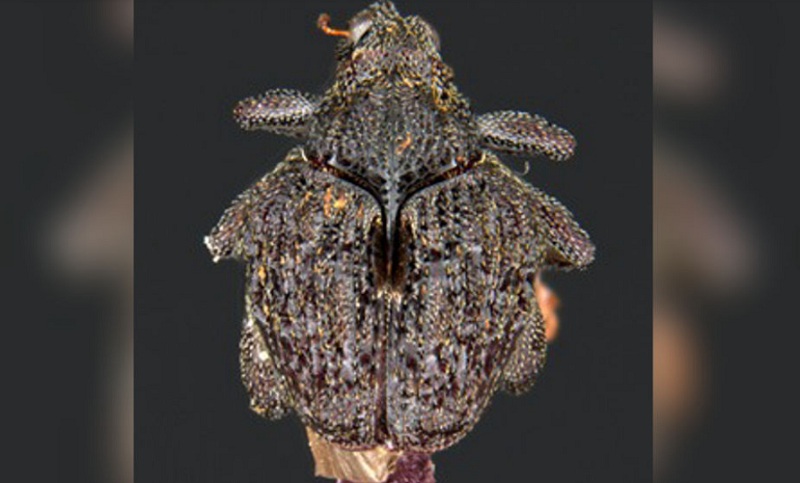Shillong: A remarkable new discovery has emerged from the biodiverse forests of Meghalaya—a unique species of weevil that not only represents a new species but an entirely new genus, named Spathaspina.
This fascinating beetle adds a fresh marvel to the growing list of unique life forms found in India’s Northeast.
Formally described by Indian entomologists, the new species, Spathaspina noohi, sports a dramatic, sword-like spine on its back. This highly unusual anatomical feature led researchers to assign it to an entirely new genus within the subfamily Ceutorhynchinae.
This new genus name combines Latin words spatha (meaning sword) and spina (meaning spine), inspired by the beetle’s prominent spine. The beetle was found in the Umran area of Ri Bhoi district in Meghalaya at an elevation of 781 metres.
Weevils, part of the extensive beetle family Curculionidae, are among the most diverse insects globally, with over 60,000 described species. While many are known as agricultural pests, others play crucial ecological roles, such as controlling invasive plant species and maintaining healthy plant-insect dynamics.
The discovery was made by entomologist S S Anooj from Kerala Agricultural University and formally described by B Ramesha in the international journal Zootaxa.
“This new genus not only adds to our understanding of weevil diversity but also highlights how much more there is to discover in Meghalaya’s ecosystems,” said Dr. Ramesha.
The subfamily Ceutorhynchinae includes just over 1,300 species. These beetles are found around the world, but not in New Zealand, Oceania, Antarctica and nearby islands, or southern South America (below central Argentina and Chile). The greatest variety of these beetles is seen in the Palaearctic Region (Europe, North Africa, parts of Asia), followed by the Oriental Region (South and Southeast Asia).
Ceutorhynchinae beetles are typically recognized by their sturdy bodies, their ability to retract their snout (rostrum) between their front legs when at rest, and the visibility of their mesanepimera (a part of their body) from the back—though exceptions exist in some genera like Cyphosenus and Ceutorhynchoides.
The tribe Mecysmoderini, a specific group within Ceutorhynchinae, currently includes 8 genera and 107 species, predominantly found in the Oriental region. This tribe is distinguished by features such as a spine-like projection at the back of the pronotum (part of the thorax), a hidden scutellar shield, and usually six segments in the funicle (a part of the antenna).
ALSO READ: Honeymoon horror: Wife, lover allegedly plotted Raja Raghuvanshi’s death
The species, Spathaspina noohi, has been named in honour of P. B. Nooh, IAS, Director of Tourism, Government of Kerala, for his efforts in promoting nature-based tourism. The researchers say the naming is a tribute to his role in balancing ecological protection with sustainable development.















